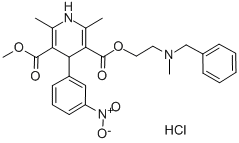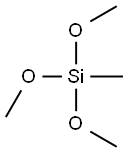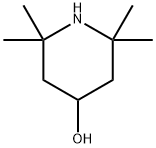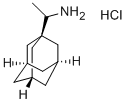Paroxetine hydrochloride
Synonym(s):(3S-trans)-3-[(1,3-Benzodioxol-5-yloxy)methyl]-4-(4-fluorophenyl)piperidine hydrochloride hemihydrate;Paroxetine hydrochloride hemihydrate
- CAS NO.:78246-49-8
- Empirical Formula: C19H21ClFNO3
- Molecular Weight: 365.83
- MDL number: MFCD00797405
- EINECS: 616-601-1
- SAFETY DATA SHEET (SDS)
- Update Date: 2025-12-23 21:30:31

What is Paroxetine hydrochloride?
Chemical properties
White Crystalline Powder
Originator
Paxil, SmithKline Beecham ,France
The Uses of Paroxetine hydrochloride
A selective serotonin reuptake inhibitor. Used as an antidepressant
The Uses of Paroxetine hydrochloride
Paroxetine is an antidepressant drug of the SSRI type
What are the applications of Application
Paroxetine HCl is a highly potent and selective serotonin (5-HT) uptake inhibitor
Definition
ChEBI: Paroxetine hydrochloride is the hydrochloride salt of paroxetine. It is an antidepressant drug. It has a role as an antidepressant, an anxiolytic drug, a hepatotoxic agent, a P450 inhibitor and a serotonin uptake inhibitor. It contains a paroxetinium(1+).
Manufacturing Process
251 g of methyl-4-(4-fluorophenyl)-N-methyl-nipecotinate, 8 g of sodium methoxide and 500 ml benzene were refluxed for 2 h. The benzene solution was washed with cold water and evaporated to give the pure α-ester which was dissolved in a mixture of 320 ml of water and 450 ml concentrated hydrochloric acid. The solution was slowly distilled to remove methanol and finally evaporated to dryness in vacuo.
400 ml thionyl chloride were added in small portions to the solid. The mixture was allowed to stand for 3 h at room temperature and was then evaporated to dryness in vacuo with tetrachloroethane giving methyl-4-(4-fluorophenyl)-Nmethylnipecotic acid chloride. The acid chloride was added in small portions to a solution of 160 g (-)-menthol in 800 ml pyridine at a temperature of 0°-5°C. The mixture was allowed to stand at room temperature to the next day. Ice water and 50% sodium hydroxide were added, and the mixture was extracted with ether. The ether was dried with anhydrous magnesium sulphate, filtered and evaporated. Distillation in vacuo gave the menthol ester in a yield of 7580%. Boiling point at 0.05 mm Hg was 165°-170°C.
Racemic 4-(4-fluorophenyl)-1-methyl-1,2,3,6-tetrahydropyridine (50 g) was dissolved in a mixture of 21.6 ml of concentrated sulfuric acid and 50 ml of water. To the solution were added 25 ml of concentrated hydrochloric acid and 22.4 ml of 37% formaldehyde solution. The mixture was refluxed for 5 h, cooled, and 125 ml of concentrated ammonia were added. The mixture was extracted with 50 ml of toluene. Drying of the toluene solution and distillation gave 38 g of 4-(4-fluorophenyl)-3-hydroxymethyl-1-methyl-1,2,3,6tetrahydropyridine with boiling point 110°-120°C at 0.1 mm Hg.
13 g of the racemic compound and 22 g of (-)-dibenzoyltartaric acid were dissolved in 105 ml of hot methanol. On cooling, 9 g of salt of (-)-4-(4fluorophenyl)-3-hydroxymethyl-1-methyl-1,2,3,6-tetrahydropyridine crystallized. Melting point 167°-168°C.
38 g of (-)-4-(4-fluorophenyl)-3-hydroxymethyl-1-methyl-1,2,3,6tetrahydropyridine were dissolved in 350 ml of 99% ethanol, 5 g of 5% palladium on carbon were added, and the mixture was treated with hydrogen until 4500 ml were absorbed. The catalyst was filtered off, and the solution was evaporated to yield 37.5 g of (+)-b-4-(4-fluorophenyl)-3-hydroxymethyl1-methylpiperidine.
To a solution of sodium in methanol (125 ml) were added 3,4methylenedioxyphenol (29 g) and the (+)-b-4-(4-fluorophenyl)-3hydroxymethyl-1-methylpiperidine (37,5 g). The mixture was stirred and refluxed. After removal of the solvent in vacuo, the evaporation residue was poured into a mixture of ice (150 g), water (150 ml), and ether (200 ml). The ether layer was separated, and the aqueous layer was extracted with ether. The combined ether solutions were washed with water and dried with anhydrous magnesium sulphate, and the ether was evaporated. The residue was triturated with 200 ml of 99% ethanol and 11.5 ml of concentrated hydrochloric acid, yielding 30 g of (-)-b-4-(4-fluorophenyl-3-(1,3-benzdioxolyl(3)-oxymethyl)-1-methylpiperidine, hydrochloride were obtained. Melting point 202°C.
brand name
Paxil (GlaxoSmithKline).
Therapeutic Function
Antidepressant
Biological Activity
paroxetine hydrochloride is a antidepressant agents known as selective serotonin-reuptake inhibitors (ssris).paroxetine is a potent and highly selective inhibitor of neuronal serotonin reuptake. paroxetine likely inhibits the reuptake of serotonin at the
Storage
Room temperature
Properties of Paroxetine hydrochloride
| Melting point: | 129-131°C |
| storage temp. | 2-8°C |
| solubility | insoluble in H2O; ≥17.8 mg/mL in EtOH; ≥18.29 mg/mL in DMSO |
| form | neat |
| form | Solid |
| color | White to off-white |
| CAS DataBase Reference | 78246-49-8(CAS DataBase Reference) |
Safety information for Paroxetine hydrochloride
| Signal word | Warning |
| Pictogram(s) |
 Exclamation Mark Irritant GHS07 |
| GHS Hazard Statements |
H302:Acute toxicity,oral H315:Skin corrosion/irritation H319:Serious eye damage/eye irritation H335:Specific target organ toxicity, single exposure;Respiratory tract irritation |
| Precautionary Statement Codes |
P261:Avoid breathing dust/fume/gas/mist/vapours/spray. P305+P351+P338:IF IN EYES: Rinse cautiously with water for several minutes. Remove contact lenses, if present and easy to do. Continuerinsing. |
Computed Descriptors for Paroxetine hydrochloride
Paroxetine hydrochloride manufacturer
SRINI PHARMACEUTICALS PVT LTD
New Products
4,4-Difluoropiperidine hydrochloride tert-butyl 9-methoxy-3-azaspiro[5.5]undecane-3-carboxylate Indole Methyl Resin N-Isopropylurea N,N-Dicyclohexylcarbodiimide(DCC) MELDRUMS ACID 5-METHYLISOXAZOLE-4-CARBOXYLIC ACID Magnessium Bis glycinate Zinc ascorbate 1-bromo-2-butyne 2-acetamidophenol 9(10H)-anthracenone Erythrosin B, 4-Piperidinopiperidine 2-((4-morpholinophenylamino) (methylthio) methylene) malononitrile 2,4-dihydroxybenzaldehyde 3-(4-morpholinophenylamino)-5-amino-1H-pyrazole-4-carbonitrile Methyl 2-methylquinoline-6-carboxylate 2,6-dichloro-4-nitropyridine 4-Bromo-2-chlorobenzonitrile 2-(benzylamino)acetic acid hydrochloride 4-(tert-Butoxycarbonylamino)but- 2-ynoic acid 3,4-dihydro-2H-benzo[b][1,4]dioxepine 1-Phenyl-1-cycloprppanecarboxylicacidRelated products of tetrahydrofuran








You may like
-
 78246-49-8 Paroxetine hydrochloride 98%View Details
78246-49-8 Paroxetine hydrochloride 98%View Details
78246-49-8 -
 Paroxetine hydrochloride 98%View Details
Paroxetine hydrochloride 98%View Details -
 Paroxetine hydrochloride 98%View Details
Paroxetine hydrochloride 98%View Details
78246-49-8 -
 Paroxetine hydrochloride 78246-49-8 98%View Details
Paroxetine hydrochloride 78246-49-8 98%View Details
78246-49-8 -
 78246-49-8 Paroxetine hydrochloride 99%View Details
78246-49-8 Paroxetine hydrochloride 99%View Details
78246-49-8 -
 Paroxetine HCL 98%View Details
Paroxetine HCL 98%View Details -
 Paroxetine CAS 78246-49-8View Details
Paroxetine CAS 78246-49-8View Details
78246-49-8 -
 Paroxetine hydrochloride (anhydrous) CAS 78246-49-8View Details
Paroxetine hydrochloride (anhydrous) CAS 78246-49-8View Details
78246-49-8
